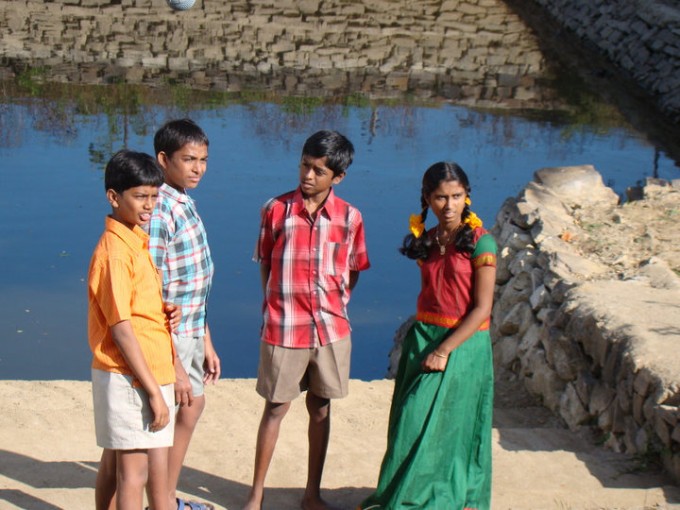Putaani Party won the National award for the Best Children’s Film of 2009. The film is shot in Dharwad, Karnataka and the director, Ramchandra PN, has used mostly local actors. He was inspired by various initiatives to empower children through self governance, in Kundapur, Rajasthan, Tamil Nadu and Brazil. He believes that whether one wants or not, a child is made aware of politics at a very young age. What is important is the kind of politics they are exposed to. It is important to ensure that governance reaches grassroots levels. And his film deals with one such structure that involves children.
Anil, Geetha, Chandru, Gaarya and Hussain are members of the Makkala Samiti in their village, guided by their teacher, Neelu. The film begins with Anil calling Gaarya to go to school. But Gaarya usually misses school because his house receives water only late in the day when both his parents are at work, so he has to stay back to fill the water. The Makkala Samiti takes this matter to the Village Sarpanch who helps them to address the Water Board and solve Gaarya’s problem. The Makkala Samiti gains strength from this victory.
The narrative unfolds such that we too learn along with the children how rural self governance bodies work and how the children must best present their issues so that they are heard. Gaarya is the poorest boy among the children and vulnerable as his father is an alcoholic. But he is the one who makes the other children aware of the real issues that need to be addressed. Early on in the film, Anil tells him that they will all contribute the money for Gaarya to be able to join the school picnic. Gaarya replies, “What will I do at the picnic? Can you get together and stop my father from drinking?” This prompts Anil, Geetha and Chandru to take up the cause of rampant alcoholism in the village.
Along the way they learn many difficult things. Anil learns that his own father runs an illegal liquor unit, Geetha learns that her mother as the only woman member of the Panchayat is not above using the Makkala Samiti to gain publicity for herself. The children also realize that the adult politicians would be happy for the children to be occupied with window dressing issues like a cleanliness drive, but do not really want them to disturb the status quo. The children learn that if someone rocks the system, they can be removed, as their supportive teacher is politely asked to resign. The trick is for them to retain their own idealism and belief that things can change and yet be clever enough to beat their elders at their own game.
The cinematography of the film by Sameer Mahajan is controlled and serene. The village is exposed through beautiful long shots, pans and tracks. The location comes through in all the shots of the film albeit not in a forced way. Most scenes open with a precedence of dialogue over visual, allowing us to see the setting before we move into the scene. This mise-en-scene in a strange way not only mirrors the languid pace of village life but also the slow revelations of how village politics works, increasing the sense of intrigue. This keeps us hooked and does not let the narrative become simplistic.
The humor in the film too is subtle, and comes through within the scene itself. The eagerness of the adult politicians to be photographed, the little child imitating the drunkard as he tries to get up from the street, the children scared to approach an inspector, the children watching as Anil’s father is about to spit on the road, the children’s greed for bhajiyas at every meeting, these are small moments which may easily be missed but which add layers to the film’s narrative.
A political film for children is certainly a change from the fantasies or adventures generally considered as kid-viewing. The film offers no easy solutions, but definitely depicts child power, and how they can use it effectively. Despite touching on several issues that affect children and being open ended, the film does not leave you with despair, but is inspirational.
Kannada, Children’s Film, Drama, Color


